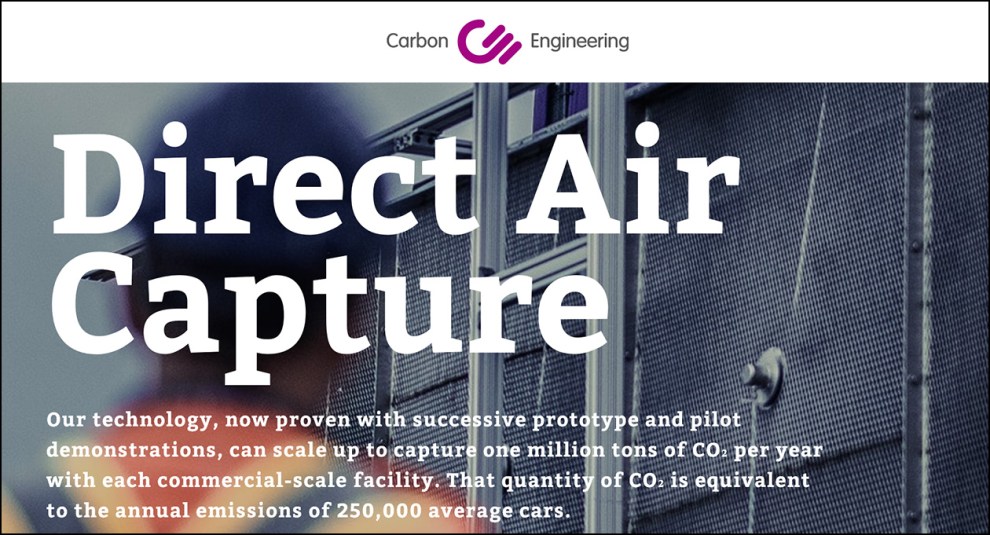
Carbon Engineering
Over at the Atlantic, Robinson Meyer describes a new process for creating fuel that releases no net CO2:
First, outside air is sucked into the factory’s “contactors” and exposed to an alkaline liquid….Second, the now-watery liquid (containing carbon dioxide) is brought into the factory, where it undergoes a series of chemical reactions to separate the base from the acid….Finally, the carbon dioxide is combined with hydrogen and converted into liquid fuels, including gasoline, diesel, and jet fuel.
….What does that mean? Consider an example: If you were to burn Carbon Engineering’s gas in your car, you would release carbon-dioxide pollution out of your tailpipe and into Earth’s atmosphere. But as this carbon dioxide came from the air in the first place, these emissions would not introduce any new CO2 to the atmosphere. Nor would any new oil have to be mined to power your car.
“Nor would any new oil have to be mined to power your car.” That sounds a bit like burying the lead, doesn’t it? Anyway, this new process sounds great, but the article skips a wee little step. Where does all the hydrogen come from?
Electrolysis of some kind, I suppose, or some other method of splitting water into hydrogen and oxygen. But that takes a lot of energy. That’s why we don’t have cheap, plentiful synthetic gasoline already. But then again, there’s this from last year:
University of Houston physicists have discovered a catalyst that can split water into hydrogen and oxygen, composed of easily available, low-cost materials and operating far more efficiently than previous catalysts.
….The catalyst, composed of ferrous metaphosphate grown on a conductive nickel foam platform, is far more efficient than previous catalysts, as well as less expensive to produce. “Cost-wise, it is much lower and performance-wise, much better,” said Zhifeng Ren, M.D. Anderson professor of physics and lead author on the paper. The catalyst also is durable, operating more than 20 hours and 10,000 cycles in testing.
There’s a lot of research going into more energy-efficient ways of splitting hydrogen out of water, and hydrogen is relatively easy to store. As usual, the key to all this is how well it scales and how much it really costs once you put everything together. But even if this is one of those things that’s still five or ten years away, it’s promising news anyway.













